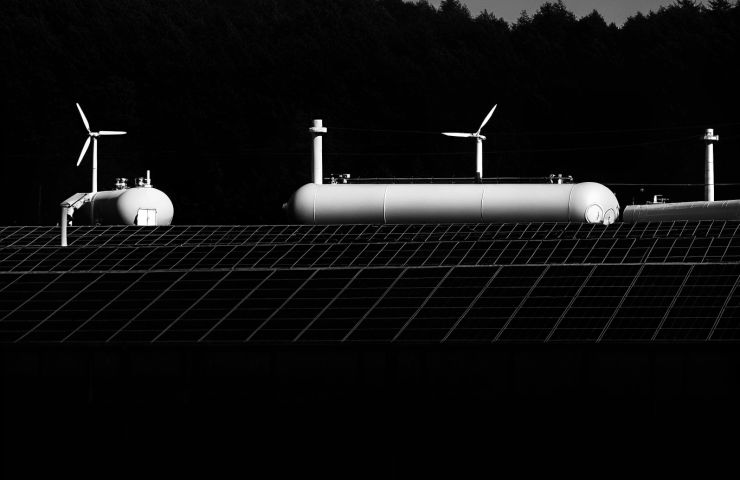
Hydrogen Storage Expands as Asia-Pacific Builds Clean Energy Backbone
July 24, 2025Hydrogen storage used to be one of those niche industrial topics only a few insiders really paid attention to. But not anymore. Today, it’s becoming a powerhouse in the global clean energy race. With the world pushing hard to slash emissions, ramp up renewables, and hit tough climate goals, hydrogen storage is stepping into the spotlight—especially in the fast-moving Asia-Pacific (APAC) region.
Where Infrastructure and Ambition Collide
As of 2024, the hydrogen storage market in APAC has ballooned to a whopping $4.6 billion, and it’s on a trajectory to keep growing, with a global compound annual growth rate (CAGR) of 12.6% predicted through 2034. Countries like Japan, China, South Korea, and Australia are making major plays. They’re pouring capital into building out infrastructure—including tanks, terminals, and cutting-edge systems like metal hydrides—to back a hydrogen-powered future.
Why’s this happening now? Simple. When it comes to long-duration or seasonal energy storage, hydrogen outperforms traditional batteries. Whether it’s made from renewables, natural gas reforming, or electrolysis, stored hydrogen gives you a backup plan that’s flexible, dispatchable, and ready to step in when the grid needs a hand.
Quick Highlights
- APAC holds 39% of the global hydrogen storage market in 2024, valued at $4.6 billion.
- Compressed hydrogen storage still leads the pack, thanks to its affordability and tech maturity—think pressure levels between 350–700 bar.
- Material-based storage is on the rise, bringing better safety and energy density to the table.
- Cylinder-based tanks currently dominate by storage type in 2024.
The Big Players Making Big Moves
A number of leading companies see hydrogen storage as more than just a side project—it’s a core part of their clean energy game plan:
- Air Liquide (France): Scaling up hydrogen storage across Europe and APAC, laying down essential infrastructure.
- Air Products Inc. (US): Building hydrogen hubs across Asia, Europe, and North America through major partnerships.
- Engie (France): Connecting hydrogen storage with renewables to support large-scale industry decarbonization.
- ITM Power (UK): Specializing in electrolyzers and onsite hydrogen storage systems for mobility and power use.
- Linde plc (Ireland/Germany): Leading the charge in cryogenic storage and hydrogen compression across industries.
- Nel ASA (Norway): Delivering full hydrogen infrastructure stacks, with a firm focus on APAC’s booming demand.
- Cummins Inc. (US): Pouring investment into fuel cell technology and onboard hydrogen production and storage.
- Iwatani Corporation (Japan): Supporting hydrogen supply chains for both stationary systems and fuel cell vehicle use across East Asia.
- Nedstack (Netherlands): Integrating storage into transport and stationary fuel cell systems.
The Tech Under the Hood
When we talk hydrogen storage, there are three go-to approaches you’ll see out there:
- Compressed Gas: The most commonly used format, especially for vehicles and refueling stations. It works well at high pressures, up to 700 bar.
- Liquid Hydrogen: Great for transporting larger amounts, especially across borders or at sea. It needs advanced cryogenic tech, but packs a lot of hydrogen in a small space.
- Material-Based Storage: Solutions like metal hydrides and LOHCs are helping make storage safer and more compact. They’re gaining ground in both transport and fixed-location applications.
Why Now? Why Hydrogen Storage Matters More Than Ever
Governments and companies all over the world are doubling down on hydrogen storage—not just because it’s trendy, but because it’s practical. Hydrogen fills the gaps batteries can’t. It can help shift energy from one season to the next, power long-haul trucks on green fuel, and keep industries running clean.
- In Europe and APAC, major funding is fueling the build-out of hydrogen valleys, terminals, and vehicle infrastructure.
- Industrial gas suppliers and OEMs are teaming up to design scalable, bankable storage solutions.
- Grid operators see hydrogen as a flexible buffer—storing extra solar on a Sunday, and turning it into power when things get tight mid-week.
At the big-picture level, hydrogen storage isn’t just a utility—it’s becoming a key piece of the puzzle that connects different corners of the energy world. Mobility, heating, chemicals, freight, industry—they all start to interact when you’ve got the right storage in place.
From Chemical Plants to Clean Energy Grids: The Evolution
Back in the day, hydrogen storage mainly lived in refineries and heavy industry. What’s different now? The stakes—and the scale. With renewables like wind and solar flooding the grid, green hydrogen made via electrolysis needs a place to go. That’s pushed hydrogen storage from industrial sidekick to center-stage solution for industrial decarbonization and whole-of-economy transformation.
What It All Boils Down To: Scale and Speed
If we’re serious about building a hydrogen economy, then scalable, high-performance storage solutions have to come along for the ride. The industry knows it. Governments know it. That’s why we’re seeing huge momentum from every angle—tech development, corporate deals, regulatory backing.
While compressed and liquid storage dominate today’s market, keep your eye on material-based technologies. These could turn out to be the game changers nobody saw coming.
The world’s not waiting—hydrogen storage has already become a launchpad for bigger, cleaner energy systems. It’s not a problem that needs solving. It’s the foundation we’re building the future on.



 With over 15 years of reporting hydrogen news, we are your premier source for the latest updates and insights in hydrogen and renewable energy.
With over 15 years of reporting hydrogen news, we are your premier source for the latest updates and insights in hydrogen and renewable energy.